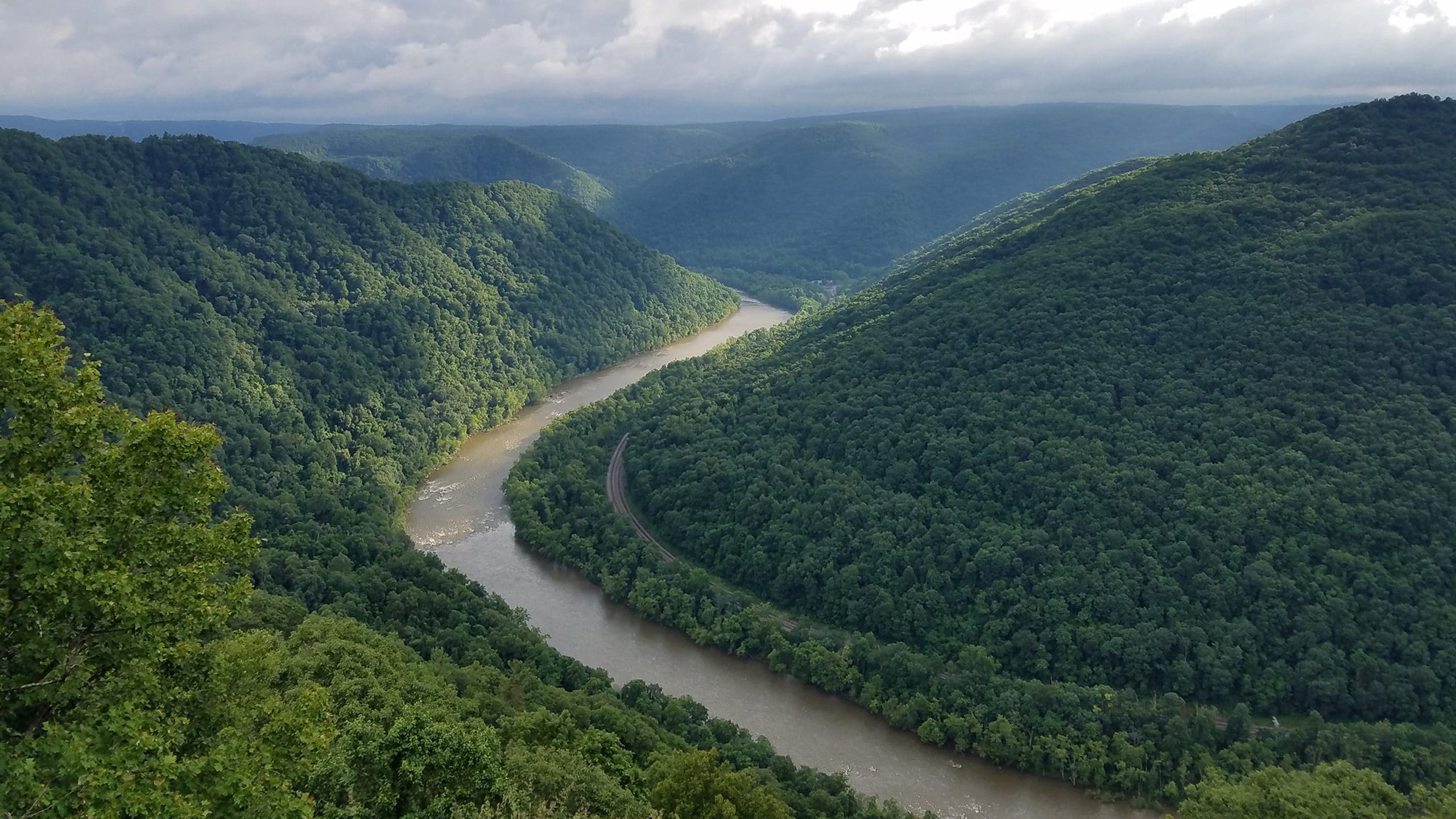About New River Gorge National Park & Preserve
Established in 1978, New River Gorge National River was redesignated as New River Gorge National Park and Preserve in 2021. The park encompasses over 70,000 acres of land along 53 miles of the New River from Bluestone Dam to Hawk’s Nest Lake. A rugged, whitewater river flowing northward through deep and spectacular canyons, the New River is actually among the oldest rivers on Earth. Here in southern West Virginia, the New River has carved and continues to carve the deepest and longest river gorge in the Appalachian Mountains.
Hiking along the many park trails, rafting the river, or biking along an old railroad grade, the visitor will be confronted with spectacular scenery that certainly makes this place worthy of being included in our national park system. However, the significance of this place goes well beyond the beautiful scenery. When looking out from Grandview, Diamond Point, Long Point, or one of the many other viewpoints in the park, we are actually looking at a globally significant forest containing the most diverse flora of any river gorge in the south and central Appalachian Mountains. The Appalachian Mountain forests are some of the oldest and most diverse ecosystems in the world. Here in southern West Virginia, the New River has sliced through the mountains, creating a mosaic of habitats: unfragmented forest, cliff and rimrock habitats, forest seeps and wetlands, and mature bottomland forests. These habitats provide a refuge for endangered mammals and rare birds and amphibians, including the endangered Virginia big-eared bat and Indiana bat and the Allegheny woodrat, a species of special concern in West Virginia and in decline throughout the eastern United States. The waters of the New River system contain a mosaic of hydrologic features and aquatic habitats that support a highly productive aquatic ecosystem that includes distinct populations of native fish, mussels, crayfish, and a broad array of other aquatic life, including rare amphibians, reptiles, birds, and mammals.
Looking out from the many fantastic viewpoints in the park will also provide a glimpse into the unique cultural history of the New River Gorge area that contributes to the significance of this place. From almost any viewpoint in the park one will see the railroad tracks that opened this rugged and isolated land to the outside world in 1872. From Grandview one will see the rail yards at Quinnimont, where coal was first shipped from the gorge, and the piers of an old bridge which once connected the timber towns of Hamlet and Glade. From Diamond Point hikers will gaze down at the ruins of Kaymoor, an early New River coal mining town. In addition to the coal mines and company towns found throughout the gorge are the old railroad depots, rail yards, rail grades, railroad equipment, and associated towns, like Thurmond, that were developed to support the railroad. Also contributing to the area’s rich cultural history are surviving examples of subsistence farms, former community sites, homesteads, and other places in the park where the ancestors of families long associated with the New River lived and worked. Bits of coal along the tracks, rows of old decaying coke ovens, gaping mine openings in the hillsides, old rusted mine cars, and the gravestones of early pioneer families provide tangible reminders of the people who worked and lived here during the late 18th and 19th centuries, supplying the coal and lumber that helped fuel the industrialization of our nation.
Today, New River Gorge National Park and Preserve is renowned for its excellent recreational opportunities: whitewater rafting, canoeing, hiking, rock climbing, fishing, hunting, bird watching, camping, picnicking, biking, and just enjoying the solitude the natural world. The Lower Gorge of the New River is a premier whitewater rafting location with imposing rapids ranging in difficulty from Class III to Class V, many of them obstructed by large boulders which necessitate maneuvering in very powerful currents, crosscurrents, and hydraulics. Commercial outfitters conduct trips down the river from April through October. The upper part of the river offers somewhat less challenging class I to III rapids for whitewater canoeing.
Source: New River Gorge National Park & Preserve – A River Runs Through It
Fast Facts:
| Date the Park was Established: | December 27, 2020 |
| Park Area (as of 2019): | 72,186 |


